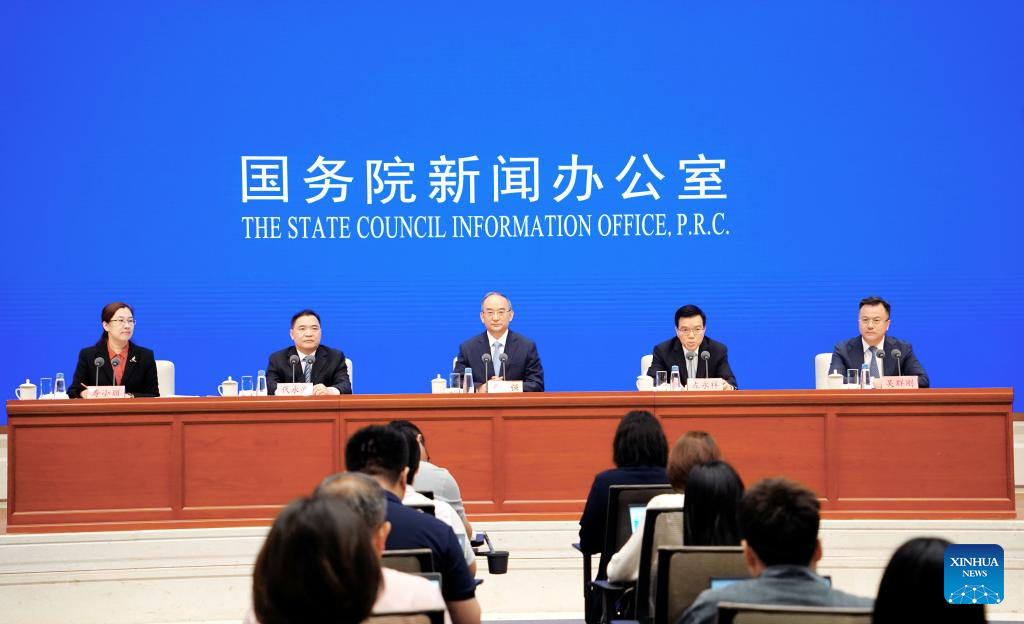
Officials of southwest China's Sichuan Province attend a press briefing on promoting high-quality development and undertaking Sichuan's mission to boost development of China's western region in the new era, in Beijing, capital of China, May 27, 2024. (Xinhua/Pan Xu)
BEIJING, May 27 (Xinhua) -- Sichuan, a landlocked province in southwest China, has expanded its transport network and fostered foreign trade businesses to enhance its global connectivity, according to a press conference held in Beijing on Monday.
Currently, 48 arterial corridors and 17 airports connect the province to the outside world, while Chengdu, the provincial capital, had in 2021 become one of only three cities in China to have two international airports, said Zuo Yongxiang, vice governor of Sichuan.
The province has established international transport routes with 112 overseas cities, exemplified by the China-Europe freight train service, Zuo said.
In addition to creating a comprehensive transport network, Sichuan has implemented measures to support foreign trade. Last year, the province had organized the involvement of nearly 3,000 companies in various activities aimed at exploring overseas markets, he added.
Zuo also revealed that Sichuan boasts over 50 national-level comprehensive bonded zones, hi-tech development zones, and economic and technological development zones, all of which have been crucial to the province's efforts to open up.
Official data showed that the value of Sichuan's total exports and imports had reached 241.5 billion yuan (about 34 billion U.S. dollars) in the first quarter of 2024, marking a 7.8 percent increase from a year earlier.
The growth rate was 2.8 percentage points higher than the national average during this period, according to the Chengdu Customs District.
Sichuan has long served as a trading hub in southwest China. It was an integral part of the ancient Tea Horse Road, a trade route dating back to the Tang Dynasty (618-907) and spanning multiple regions.
The province is currently seeking gateways to the global market by capitalizing on the New International Land-Sea Trade Corridor -- a multimodal network combining rail, road and sea transport that was established by China and Southeast Asian countries. ■



